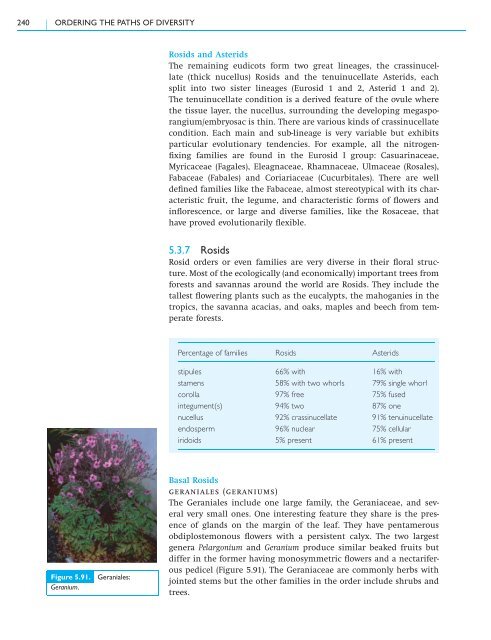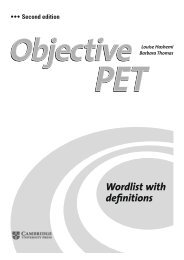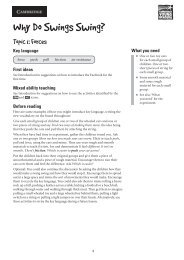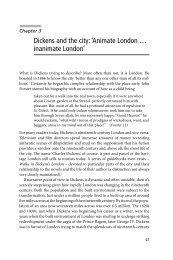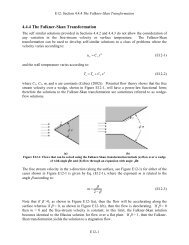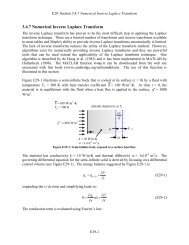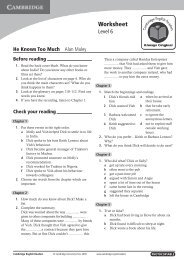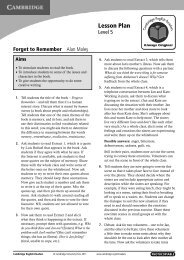5.3 Class Magnoliopsida – flowering plants - Cambridge University ...
5.3 Class Magnoliopsida – flowering plants - Cambridge University ...
5.3 Class Magnoliopsida – flowering plants - Cambridge University ...
Create successful ePaper yourself
Turn your PDF publications into a flip-book with our unique Google optimized e-Paper software.
240 ORDERING THE PATHS OF DIVERSITY<br />
Figure 5.91. Geraniales:<br />
Geranium.<br />
Rosids and Asterids<br />
The remaining eudicots form two great lineages, the crassinucellate<br />
(thick nucellus) Rosids and the tenuinucellate Asterids, each<br />
split into two sister lineages (Eurosid 1 and 2, Asterid 1 and 2).<br />
The tenuinucellate condition is a derived feature of the ovule where<br />
the tissue layer, the nucellus, surrounding the developing megasporangium/embryosac<br />
is thin. There are various kinds of crassinucellate<br />
condition. Each main and sub-lineage is very variable but exhibits<br />
particular evolutionary tendencies. For example, all the nitrogenfixing<br />
families are found in the Eurosid I group: Casuarinaceae,<br />
Myricaceae (Fagales), Eleagnaceae, Rhamnaceae, Ulmaceae (Rosales),<br />
Fabaceae (Fabales) and Coriariaceae (Cucurbitales). There are well<br />
defined families like the Fabaceae, almost stereotypical with its characteristic<br />
fruit, the legume, and characteristic forms of flowers and<br />
inflorescence, or large and diverse families, like the Rosaceae, that<br />
have proved evolutionarily flexible.<br />
<strong>5.3</strong>.7 Rosids<br />
Rosid orders or even families are very diverse in their floral structure.<br />
Most of the ecologically (and economically) important trees from<br />
forests and savannas around the world are Rosids. They include the<br />
tallest <strong>flowering</strong> <strong>plants</strong> such as the eucalypts, the mahoganies in the<br />
tropics, the savanna acacias, and oaks, maples and beech from temperate<br />
forests.<br />
Percentage of families Rosids Asterids<br />
stipules 66% with 16% with<br />
stamens 58% with two whorls 79% single whorl<br />
corolla 97% free 75% fused<br />
integument(s) 94% two 87% one<br />
nucellus 92% crassinucellate 91% tenuinucellate<br />
endosperm 96% nuclear 75% cellular<br />
iridoids 5% present 61% present<br />
Basal Rosids<br />
geraniales (geraniums)<br />
The Geraniales include one large family, the Geraniaceae, and several<br />
very small ones. One interesting feature they share is the presence<br />
of glands on the margin of the leaf. They have pentamerous<br />
obdiplostemonous flowers with a persistent calyx. The two largest<br />
genera Pelargonium and Geranium produce similar beaked fruits but<br />
differ in the former having monosymmetric flowers and a nectariferous<br />
pedicel (Figure 5.91). The Geraniaceae are commonly herbs with<br />
jointed stems but the other families in the order include shrubs and<br />
trees.


